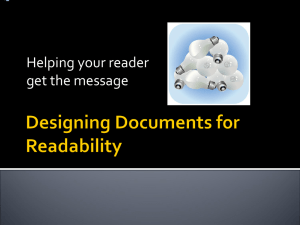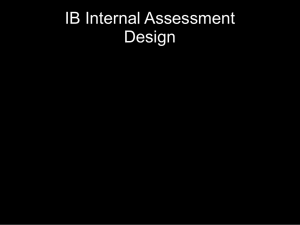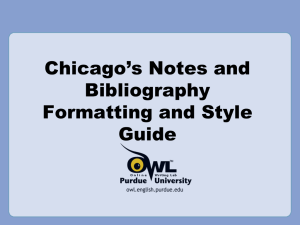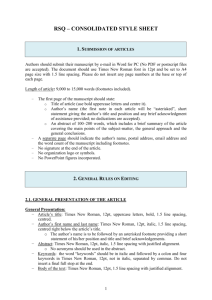Style Sheet - Oxford Journals
advertisement
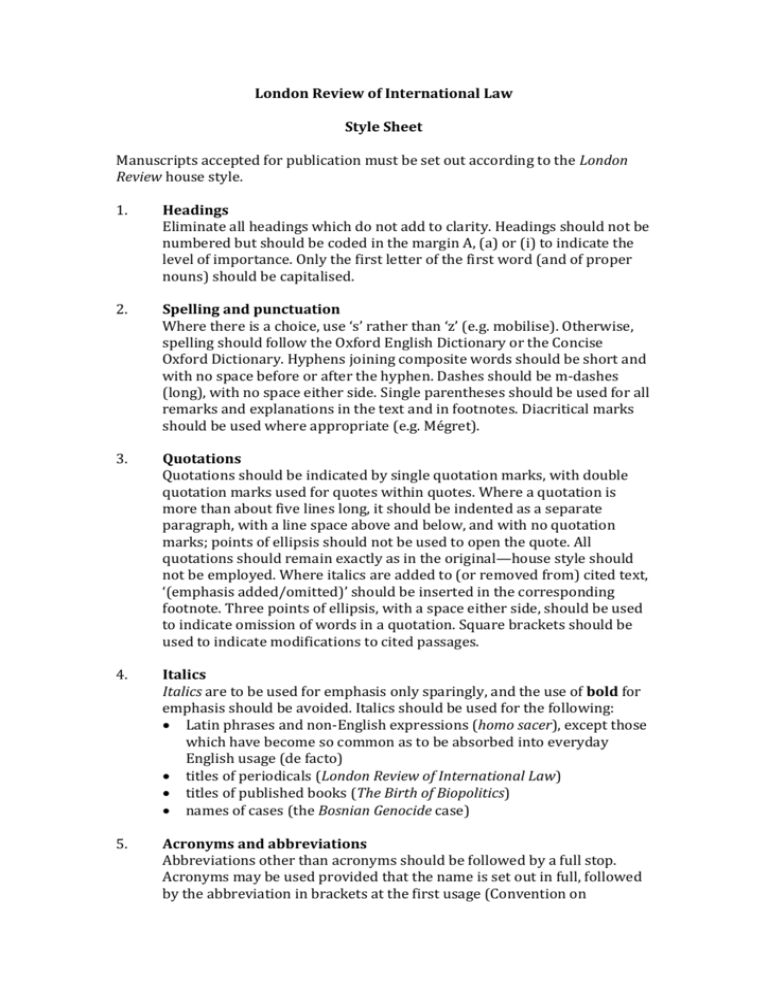
London Review of International Law Style Sheet Manuscripts accepted for publication must be set out according to the London Review house style. 1. Headings Eliminate all headings which do not add to clarity. Headings should not be numbered but should be coded in the margin A, (a) or (i) to indicate the level of importance. Only the first letter of the first word (and of proper nouns) should be capitalised. 2. Spelling and punctuation Where there is a choice, use ‘s’ rather than ‘z’ (e.g. mobilise). Otherwise, spelling should follow the Oxford English Dictionary or the Concise Oxford Dictionary. Hyphens joining composite words should be short and with no space before or after the hyphen. Dashes should be m-dashes (long), with no space either side. Single parentheses should be used for all remarks and explanations in the text and in footnotes. Diacritical marks should be used where appropriate (e.g. Mégret). 3. Quotations Quotations should be indicated by single quotation marks, with double quotation marks used for quotes within quotes. Where a quotation is more than about five lines long, it should be indented as a separate paragraph, with a line space above and below, and with no quotation marks; points of ellipsis should not be used to open the quote. All quotations should remain exactly as in the original—house style should not be employed. Where italics are added to (or removed from) cited text, ‘(emphasis added/omitted)’ should be inserted in the corresponding footnote. Three points of ellipsis, with a space either side, should be used to indicate omission of words in a quotation. Square brackets should be used to indicate modifications to cited passages. 4. Italics Italics are to be used for emphasis only sparingly, and the use of bold for emphasis should be avoided. Italics should be used for the following: Latin phrases and non-English expressions (homo sacer), except those which have become so common as to be absorbed into everyday English usage (de facto) titles of periodicals (London Review of International Law) titles of published books (The Birth of Biopolitics) names of cases (the Bosnian Genocide case) 5. Acronyms and abbreviations Abbreviations other than acronyms should be followed by a full stop. Acronyms may be used provided that the name is set out in full, followed by the abbreviation in brackets at the first usage (Convention on Biological Diversity (CBD)). Very familiar acronyms (UN, ICJ) may be used without initial explanation. Excessive use of acronyms is to be avoided. 6. Footnotes Footnote numbers follow punctuation marks. Cross-referencing should be kept to a minimum. In submitted manuscripts, cross-references to text should be to ‘000’, page numbers to be inserted when correcting proofs. Cross-references to footnotes are to be avoided. 7. Translations Translations should be provided, in footnotes, of passages in languages other than English, except where the passages are in common parlance among English speakers. 8. Other abbreviated plurals do not have an apostrophe before the s (1970s not 1970’s) no full stops in acronyms (UN not U.N.) date format is 1 January 1996 (not 1/1/96), 1995-96 (not 1995-6 or 1995-1996) per cent, not % numbers from one to nine are spelt out in words unless they refer to article or section numbers in legal texts capital letters are used when referring to a specific body, organisation or office, and in quoted titles of books, articles and legal texts; the word ‘state’ is not capitalised when used generically once space follows a full stop or colon at the end of a sentence. 9. Citation formats Books M Koskenniemi, From Apology to Utopia (Cambridge UP, 2006) 123-26. Edited books F Johns, R Joyce & S Pahuja (eds), Events: the Force of International Law (Routledge, 2011). Chapters in edited books F Mégret, ‘From “Savages” to “Unlawful Combatants”: A Postcolonial Look at International Humanitarian Law’s “Other”’, in A Orford (ed.), International Law and its Others (Cambridge UP, 2006) 265, 271. Chapters in single author books A Cassese, ‘Crimes Against Humanity: Comments on Some Problematical Aspects’, in The Human Dimension of International Law: Selected Papers (Oxford UP, 2008). Articles D Joyce, ‘Human Rights and the Mediatization of International Law’ 23 Leiden Journal of International Law (2010) 507, 515. Online material P Lamy, ‘Towards Shared Responsibility and Greater Coherence: Human Rights, Trade and Macroeconomic Policy’, 13 January 2010, available at http://www.wto.org/english/news_e/sppl_e/sppl146_e.htm (last visited 2 August 2012). Newspaper articles G Marx, ‘This Theatrical Business’, New York Times, 27 January 1929, X4. O Guardiola-Rivera, ‘Hugo Chávez kept his promise to the people of Venezuela’, Guardian, 5 March 2013, available at http://www.guardian.co.uk/commentisfree/2013/mar/05/hugo-chavezpeople-venezuelan-president (last visited 10 April 2013). Selected international legal materials Case Concerning the Application of the Convention on the Prevention and Punishment of the Crime of Genocide (Bosnia and Herzegovina v Serbia and Montenegro), 26 February 2007, 43, available at http://www.icjcij.org/docket/files/91/13685.pdf (last visited 21 September 2012). GA Res. 41/133, 4 December 1986. SC Res. 181, 7 August 1963. Art. 38(1) UN Charter. Editions, Volumes and Translators Edition is abbreviated ‘ed.’, volume ‘vol.’ and translator ‘trans.’ No superscript is used for ordinal numbers. M Shaw, International Law, 5th ed. (Cambridge UP, 2003). JB Scott, Law, the State and the International Community, vol. 2 (Columbia UP, 1939). W Benjamin, Understanding Brecht, trans. Anna Bostock (Verso, 1998). Subsequent Citations Second and subsequent citations of a single publication should be in short form. Koskenniemi (2006) 123. Where three or more authors or editors are listed in the original citation, subsequent citations should refer to only the first listed author or editor followed by ‘et al.’ Johns et al. (2011). ‘Ibid’ is used where there are two or more consecutive references to the same work; ‘ibid 25’ where the page number differs. Koskenniemi (2006) 123. Ibid. Ibid 80. ‘See’ and other signals should not be italicised. See Joyce (2010). See, e.g., Koskenniemi (2006) 80. Abbreviated Titles Documents with long titles should include an abbreviated title in parentheses following the initial citation; subsequent citations should refer to abbreviated title. Convention concerning the Exchange of Greek and Turkish Populations and Protocol, signed at Lausanne, 30 January 1923, 32 LNTS 75 (Exchange Convention) Exchange Convention 77-78 Other No full stop follows an author’s initial; no space is included between multiple initials. An ampersand (&) rather than ‘and’ is used for multiple authors or in a publisher’s name. A full stop is used to indicate absent letters in an abbreviation (ed.; trans.; vol.; para.) but is not used following a contraction (eds; pt; vols; paras). Citations to specific footnotes follow the format Mégret (2006) 270, note 12. Where texts were first published considerably earlier than the cited edition, the original year of publication should be indicated in square brackets following the cited edition: e.g. C Schmitt, The Crisis of Parliamentary Democracy, trans. E Kennedy (MIT Press, 1988) [1932].



